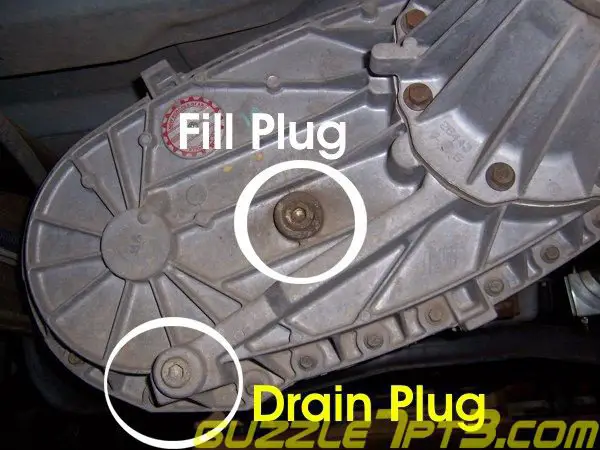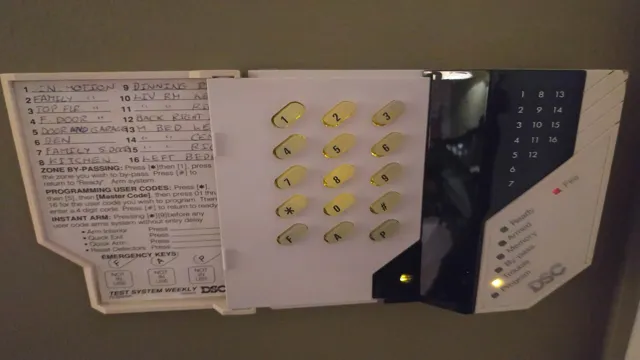How to Check Fluid in Transfer Case: A Step-by-Step Guide
Transfer cases are essential components of any four-wheel-drive vehicle. They are responsible for transmitting power from the transmission to the front and rear axles. The transfer case also helps in selecting the appropriate gear ratio for the terrain you are driving on. For the transfer case to function correctly, it must have adequate fluid to lubricate its internal parts.
In this article, we will provide a comprehensive guide on how to check fluid in transfer case. We will discuss the tools you need, the steps you should follow, and the signs that indicate your transfer case needs fluid.

Credit: www.fordservicecontent.com
Tools you need to check fluid in transfer case
Before you start checking the fluid level in your transfer case, you must have the following tools:
- Ratchet wrench
- Socket set
- Transfer case fluid
- Funnel
- Oil drain pan
Steps to check fluid in transfer case
Follow these steps to check the fluid level in your transfer case:
- Park your vehicle on a level surface and engage the parking brake.
- Locate the transfer case. It is usually located between the transmission and rear differential.
- Locate the fill plug and the drain plug on the transfer case. The fill plug is usually located on the side of the transfer case, while the drain plug is located at the bottom.
- Remove the fill plug using a ratchet wrench and socket set. Make sure you have an oil drain pan beneath the plug to collect any fluid that may spill.
- Insert your finger into the fill hole and feel for the fluid level. The fluid level should be up to the fill hole. If the fluid level is low, you need to add fluid.
- Using a funnel, add fluid to the transfer case until it reaches the fill hole.
- Reinstall the fill plug and tighten it with a ratchet wrench and socket set.

Credit: www.youtube.com
Signs that indicate your transfer case needs fluid
It is essential to check the fluid level in your transfer case regularly. However, some signs indicate that your transfer case needs fluid. Here are some of the signs:
- Loud noises while driving – As the transfer case fluid loses its lubricating properties, friction will occur inside. This will create loud grinding noises which may become louder when four-wheel drive is engaged.
- Fluid Puddle Under the Transfer Case’s Location – This is an obvious sign of a leak in the transfer case. If you notice a fluid puddle under your vehicle, you should check the fluid level in the transfer case immediately.
- Strange Grinding, Growling or Humming Noises – These noises may indicate that the transfer case is low on fluid or has a leak.
- Shifting Issues – If you experience difficulty shifting your vehicle into four-wheel drive, it may be due to low fluid in the transfer case.
Frequently Asked Questions
How Do I Know If My Transfer Case Needs Fluid?
To check if your transfer case needs fluid, look for any leaks underneath the vehicle. Also, listen for loud grinding noises, especially when engaging four-wheel drive. Regularly inspecting the transfer case for leaks and damage is crucial. When in doubt, consult a professional mechanic for an assessment.
How To Check Oil In A Transfer Case?
To check oil in a transfer case, park on level ground, locate the fill and drain plugs, remove the fill plug, check oil level, top up if needed, and reinstall the plug tightly. Remember to inspect transfer case fluid during oil changes.
How To Check If A Transfer Case Is Good?
To check if a transfer case is good, remove the fill plug and inspect the fluid level. Ensure it’s at the right level for smooth performance.
Does Transmission Fluid Go In The Transfer Case?
Yes, transmission fluid does not go in the transfer case. It requires gear oil, ATF, or specialized lubricants.
Conclusion
Checking the fluid level in your transfer case is a simple process that you can do yourself. Regularly checking the fluid level in your transfer case will help you detect any leaks or low fluid levels early, preventing costly repairs in the future. If you notice any of the signs mentioned above, you should check the fluid level in your transfer case immediately. If you are unsure about how to check the fluid level in your transfer case, you can consult a professional mechanic.






